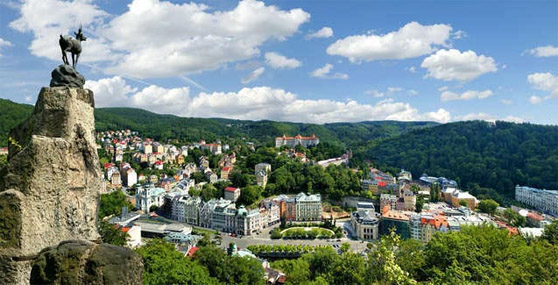
K. The ensuring of unstable slopes will cost 24 million
 |
To prevent further erosion of the slope on Na Vyhlídce, a system of so-called gabion walls will be constructed here by the company Algon by this November. The company won the tender in which six companies applied. Their bids ranged from 9.4 million to 13.6 million crowns, the mayor stated. "Reinforcing the slope will also solve the shortage of parking spaces on the street. Drivers have even excavated parking spaces from the slope," remarked Hauptmann.
The construction work on Na Vyhlídce will take place without interrupting traffic on the road, which is the only direct link between the spa sanatoria in the area below the Imperial. Therefore, motorists must expect worse passage. Contracts worth more than 3.1 million crowns have also been signed for the repair of retaining walls in Bezručova, Na Nebozízku, Táborské, and U Imperialu streets. The city secured about 8.3 million crowns from the State Environmental Fund for the wall repairs.
From 2005 to 2008, the city spent more than 46 million crowns on repairs to retaining walls. This included the repair of the slope on Moravská Street, which was at risk of collapsing. Now, a new retaining wall costing 4.1 million crowns prevents this. A similar situation occurred on Ondříčkova Street, where restoring the original wall cost about 4.3 million crowns. In the Karlovy Vary cadastre, there are 33 kilometers of walls, which amounts to approximately 127,000 cubic meters of stone and other construction materials. Of this, over half of the walls are owned by the city.
The English translation is powered by AI tool. Switch to Czech to view the original text source.
0 comments
add comment





